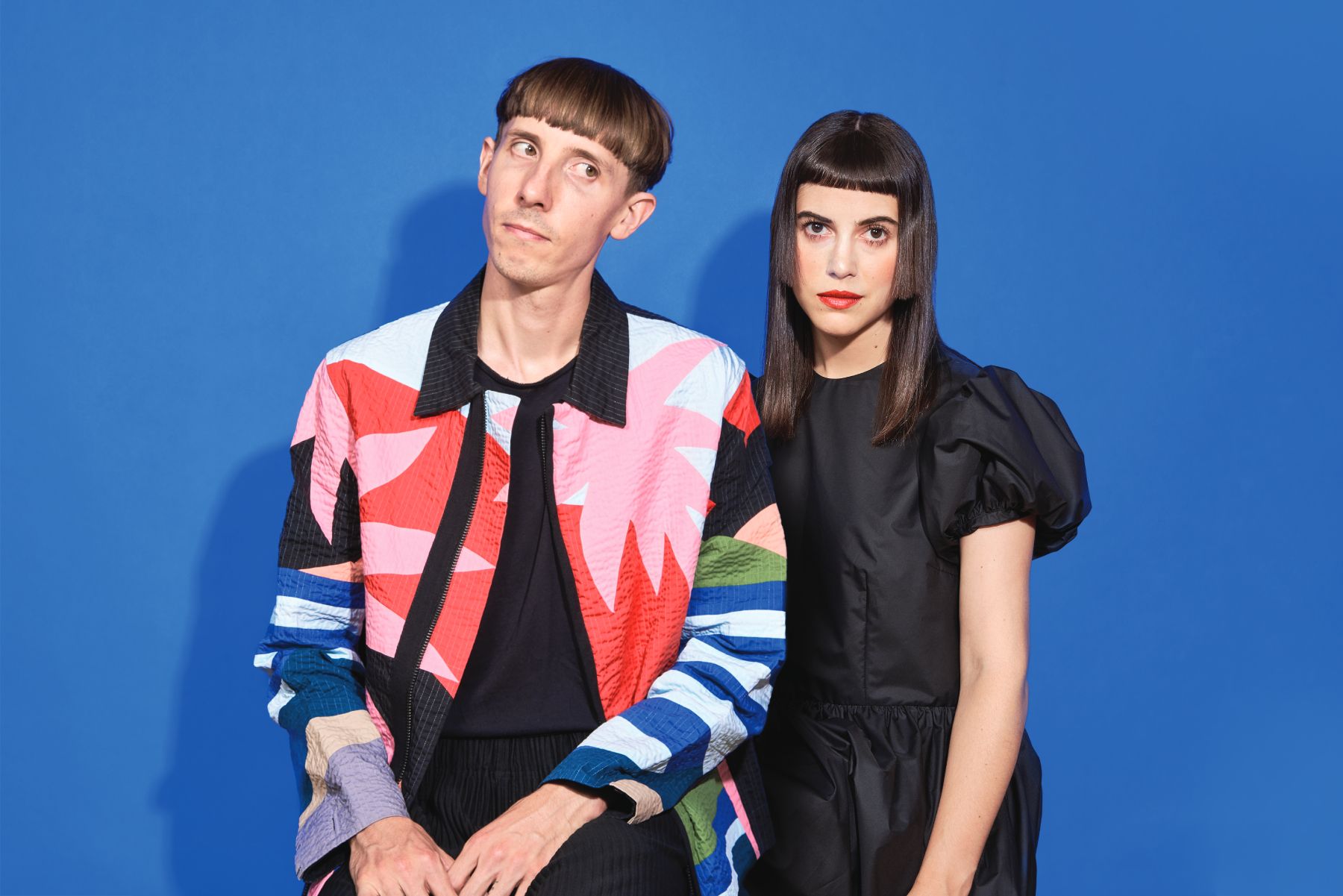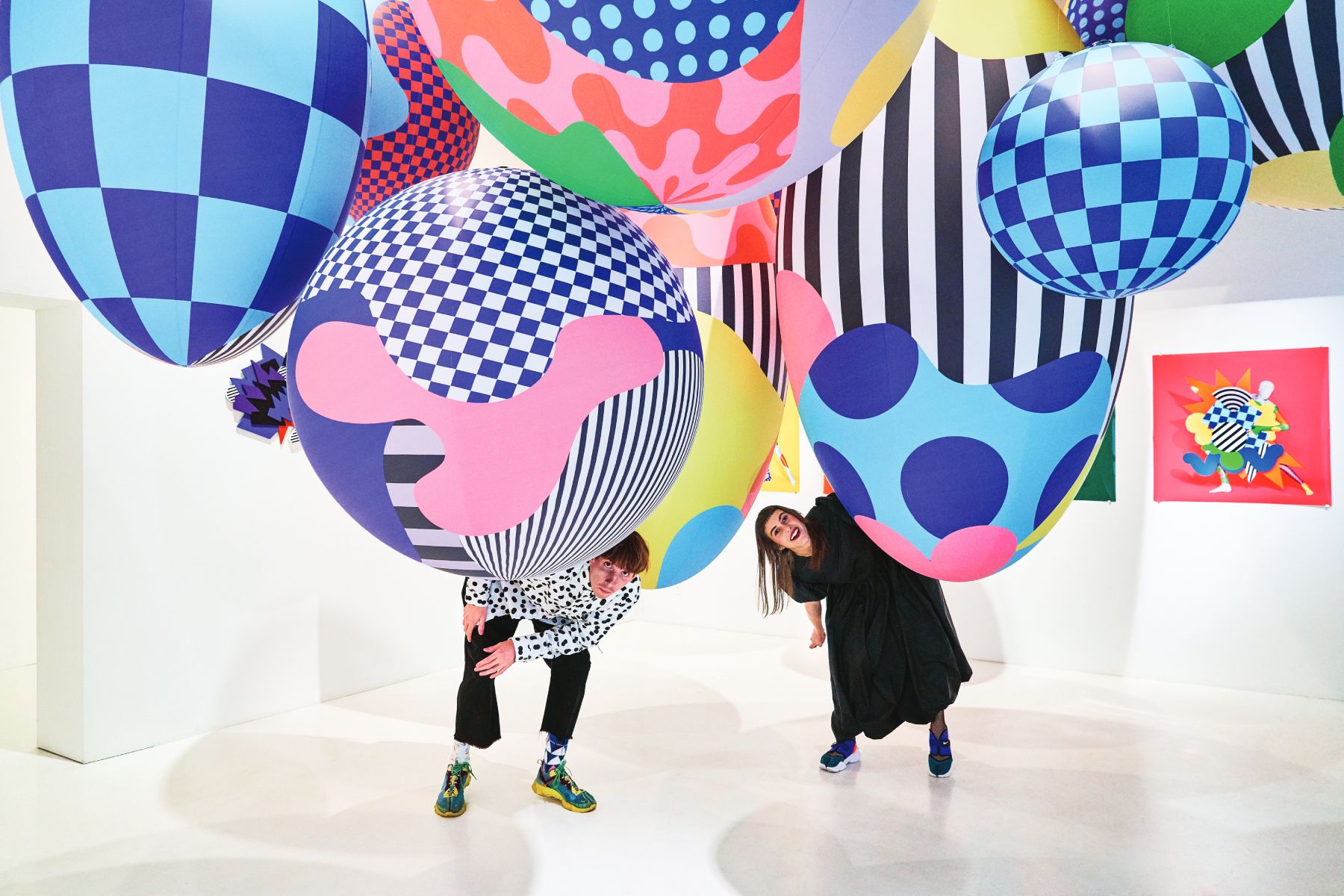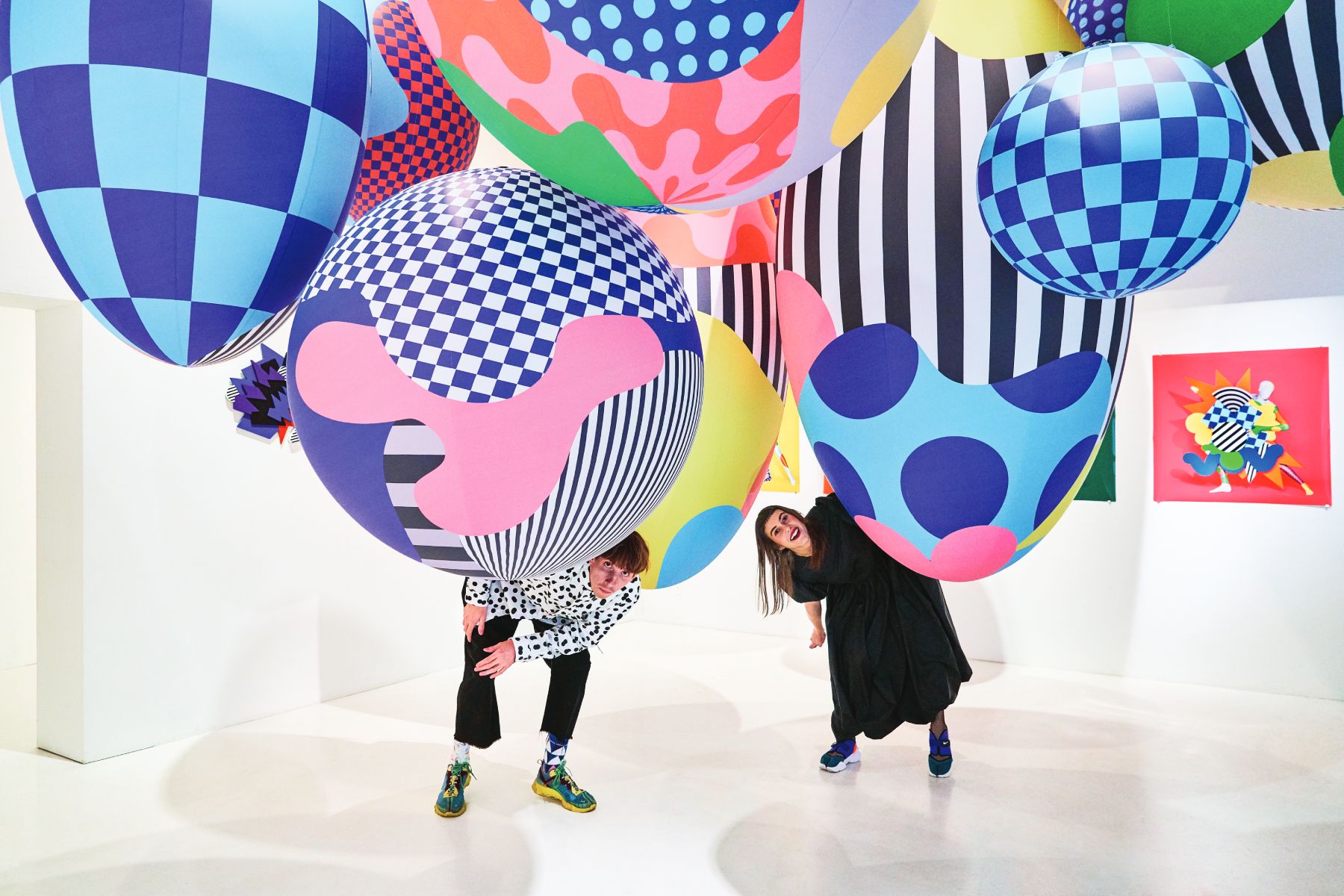Leta Sobierajski and Wade Jeffree’s story started in 2013 through OK Cupid, an online dating website. Love came first, but as graduated graphic designers, they soon started brainstorming and creating together as well. It was a match made in heaven, a meeting of like-minded people with similar tastes in humor and aesthetics. After getting married, they set up their studio to spend their days together, working with an ever-expanding range of different fields: photography, branding, installations, fashion and most recently, furniture design. Essentially, they extended graphic design to the widest spectrum with the aim of bringing fun into other people’s as well as each other’s lives.
This article was published in print in Hype&Hyper 2022/1.
Copyright: Wade and Leta
Although you are now working as multidisciplinary designers, graphic design was the starting point for both of you. How did your professional journeys begin?
Leta: I was about 12 when I asked my parents to get Photoshop for my birthday. I drew a lot of anime at the time and I wanted to scan my drawings, color them and post them on DeviantArt. Having Photoshop was kind of my gateway to graphic design—I started exploring the program and I even designed my own websites. By my senior year in high school, I became the editor and designer of our yearbook. The power of design and typography interested me and as my goal was to understand it better, graphic design seemed like the right choice for me to study at university.
Wade: It all started in high school for me too: my friends were doing a design class, and I was in need of one more, so I joined them. After that, I enrolled in another course for kids who wanted to be in the creative industry but didn’t know where to start. During this year of exploration, I realized how much I enjoy doing graphic design, typography, color selection and layouts. After university, wanting to be creative and finding a multitude of ways of doing it became a natural process for me.

When did you feel that the boundaries of traditional graphic design were not enough and you wanted to explore more complex works by mixing different disciplines?
L: Wade and I have both been interested in other mediums. For example, when we go to galleries, posters are not what we stop to look at, we are more fascinated by sculptures and paintings. Our first project together was a very personal one called Complements—a reinterpretation of hilariously cringe-worthy couple portraits that circulate on the internet.
W: When we first met, we instantly recognized that what we create is a huge part of who we are. We also realized that working on one specific thing for the rest of our lives is not for us. Instead, we find ways in which we can push ourselves with our work even further. The Complements project was a real catalyst for us, after which we concluded that we are unstoppable as a team.

Yet your installations still give me the impression as if graphic design stepped out into space. How is your graphic design background influencing the way you think and create today?
L: I’m truly grateful for my education in graphic design. There are fundamentals that are taught in your first year of university that last forever in terms of understanding shapes, colors, forms and the idea of positive space versus negative space. All of this knowledge is translatable to everything we do today, despite the fact that we are no longer doing purely graphic design.
W: Our work is undeniably rooted in graphic design, which we apply to both our commercial projects and art-based practices as well. We use “graphic design thinking” to shift how we approach other challenges. Ultimately, there’s always a strategy and system behind everything we’re creating.
Recently, you reinterpreted a funky chair in collaboration with Dims, and you also designed a Lego shoe for the Adidas X Lego collection. How do you prepare yourself for a completely new project, something you have never done before?
L: The first step is to say yes and pretend that you know what you’re doing. Then comes a lot of research to which there are no limits, education is infinite. If there’s something that we don’t yet know how to do, we always figure it out.
W: I think now more than ever, you don’t necessarily need to learn within the framework of the education system. You can just google anything you want and figure out how to design a chair or do branding, for example. You’re never too old to learn, and we want to keep learning—that’s why we try out lots of different things.

You have a very impressive portfolio, working with brands such as Herman Miller, LEGO, Comme Des Garçons, just to name a few. Looking back, what is the project that you are the proudest of or had the most fun doing?
W: The way we like to think about this question is whether the project would help us redirect the vision of our studio. One example was when A/D/O, an incubator hub, asked us to organize a party for Valentine’s Day. Our idea was to make public art and then funnel it into the party. We decided to bring children and adults, people of all backgrounds, genders, and nationalities together to celebrate through art. Organizing such an event just a year before COVID now seems like such a different kind of mentality.
L: It was a special occasion for us, as we had never done anything previously that allowed a person to inhabit space. It was our first opportunity to create something that was sculptural and life-sized, so we created a maze and had dancers there wearing our costumes.
W: It allowed everything that we had created before to live in a new space together: photography, costumes, set design and other artworks. Basically, everything became one holistic vision. It opened the doors for us to a new way of thinking and working.
Is there anything that is still high on your professional bucket lists?
W: A playground—in a way that it’s entertaining for both kids and adults, a melting pot for everyone’s fun. Our general philosophy is that we want people to have a moment of joy with our work. That can be anything—something that lasts two seconds only, or the whole day. We often notice that what draws both adults and kids to our work are colors. It always puts a smile on our faces, knowing that we succeeded in bringing something positive to people.

What inspires you the most nowadays? What do you do or where do you go when you need new input?
W: It’s funny because sometimes we’re more inspired by new work opportunities than anything else. A completely new kind of project gets us motivated, inspired and curious to try out new things and do research. We see personal life and work being one big reveal, rotating around and interacting with one another. Other than that, visiting art galleries, going for walks, traveling and playing video games are some of the things that keep us refreshed.
As spouses who have built a fruitful career, what advice would you give to couples who want to start working together?
L: You have to be upfront and honest about everything. Keeping everything to yourself won’t work, you will have to talk about every single detail. You have to respect the other’s thoughts and feelings as well as your own boundaries. In my view, honesty brings the greatest love and compassion for one another and ultimately makes your love grow stronger.

Prefer to read it in print? Order the third issue of Hype&Hyper magazine from our online Store!

Do we still pay with cash abroad?

Limited Tisza swim shorts to help people with autism










